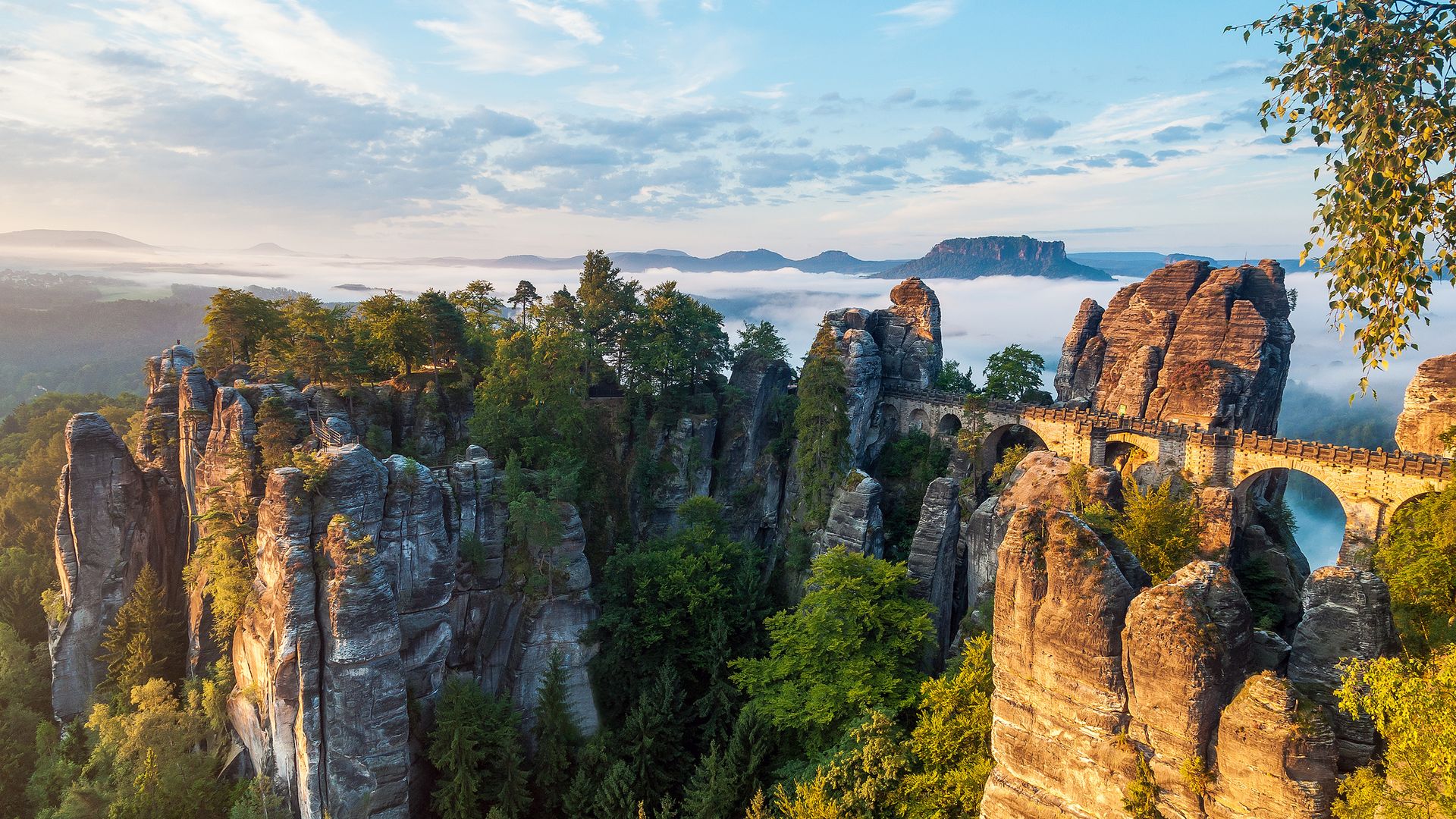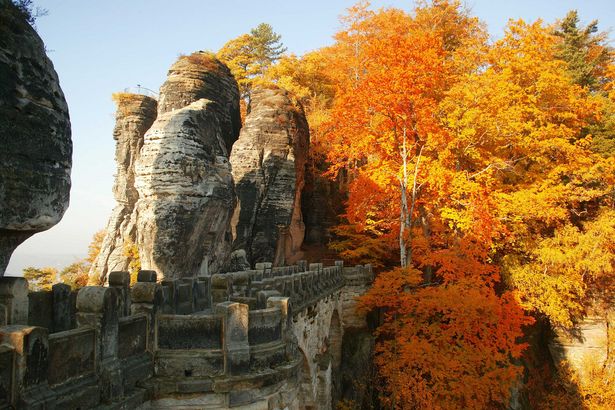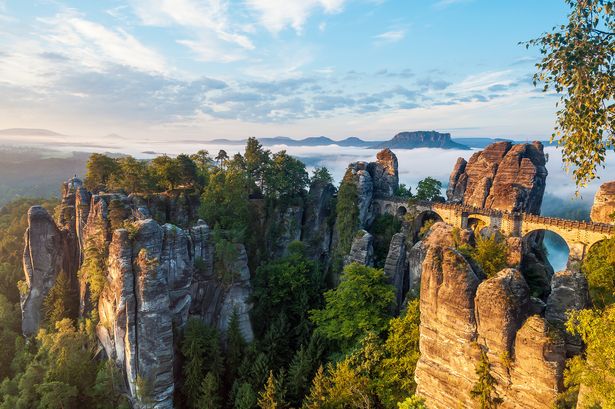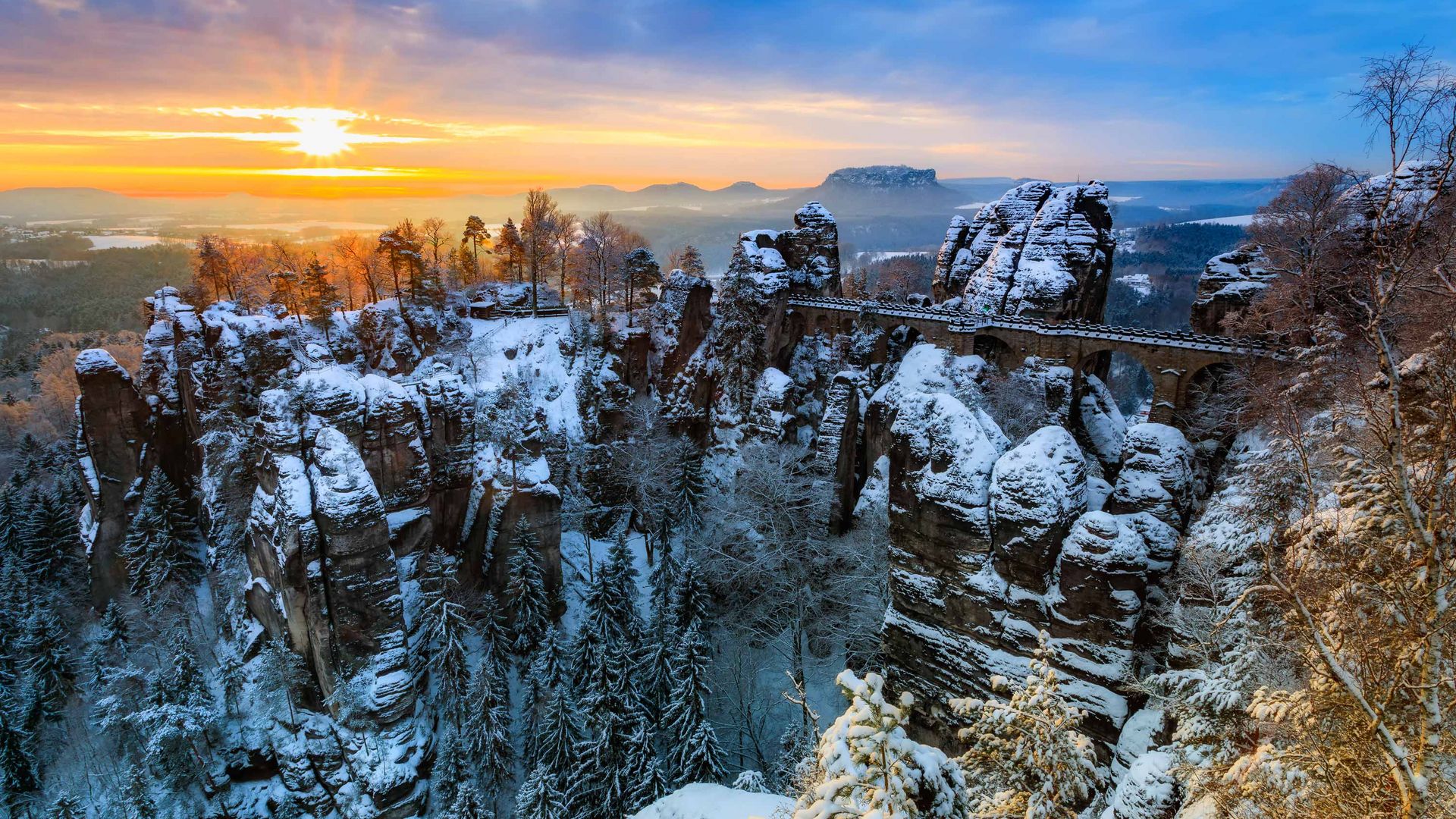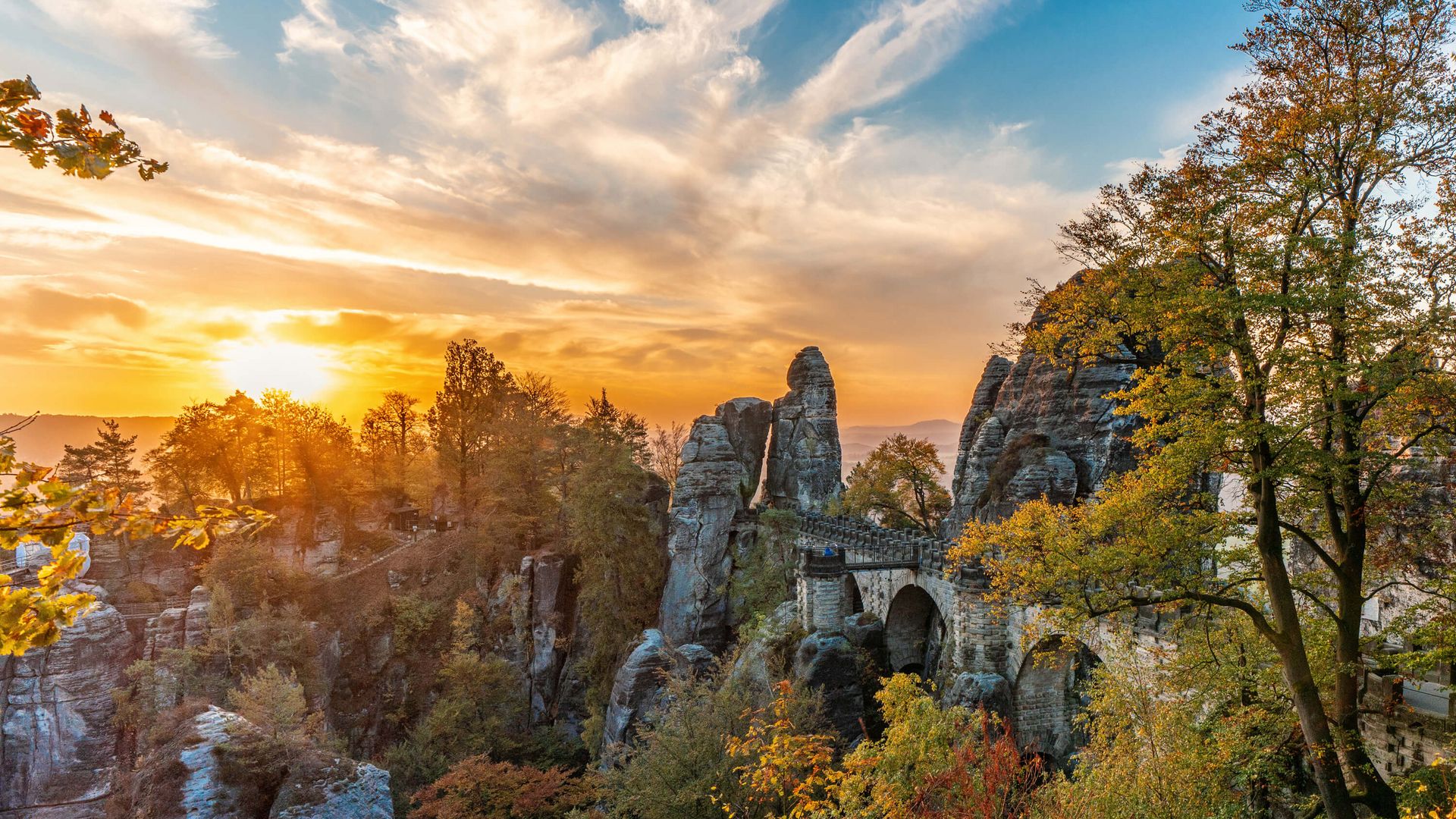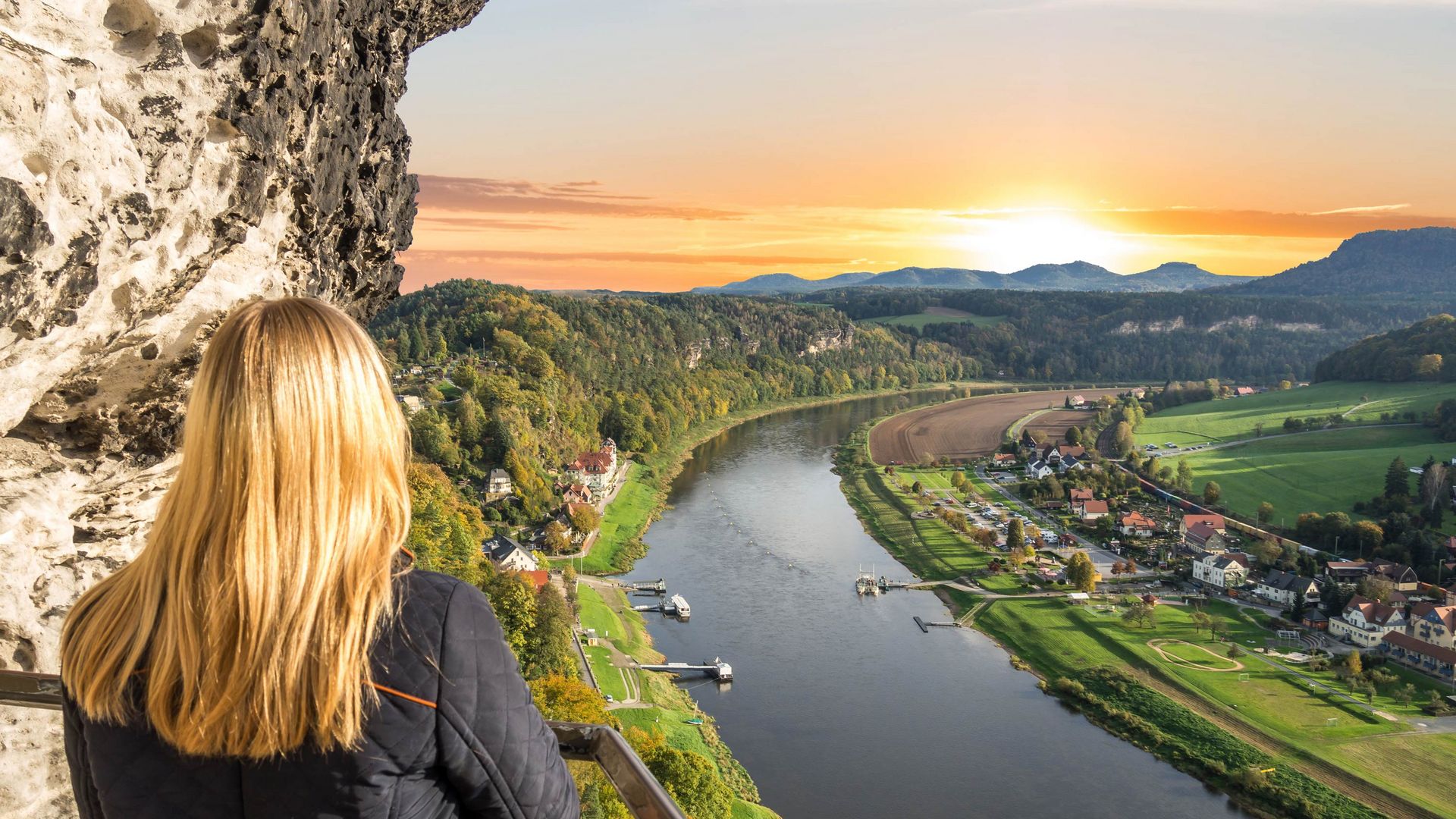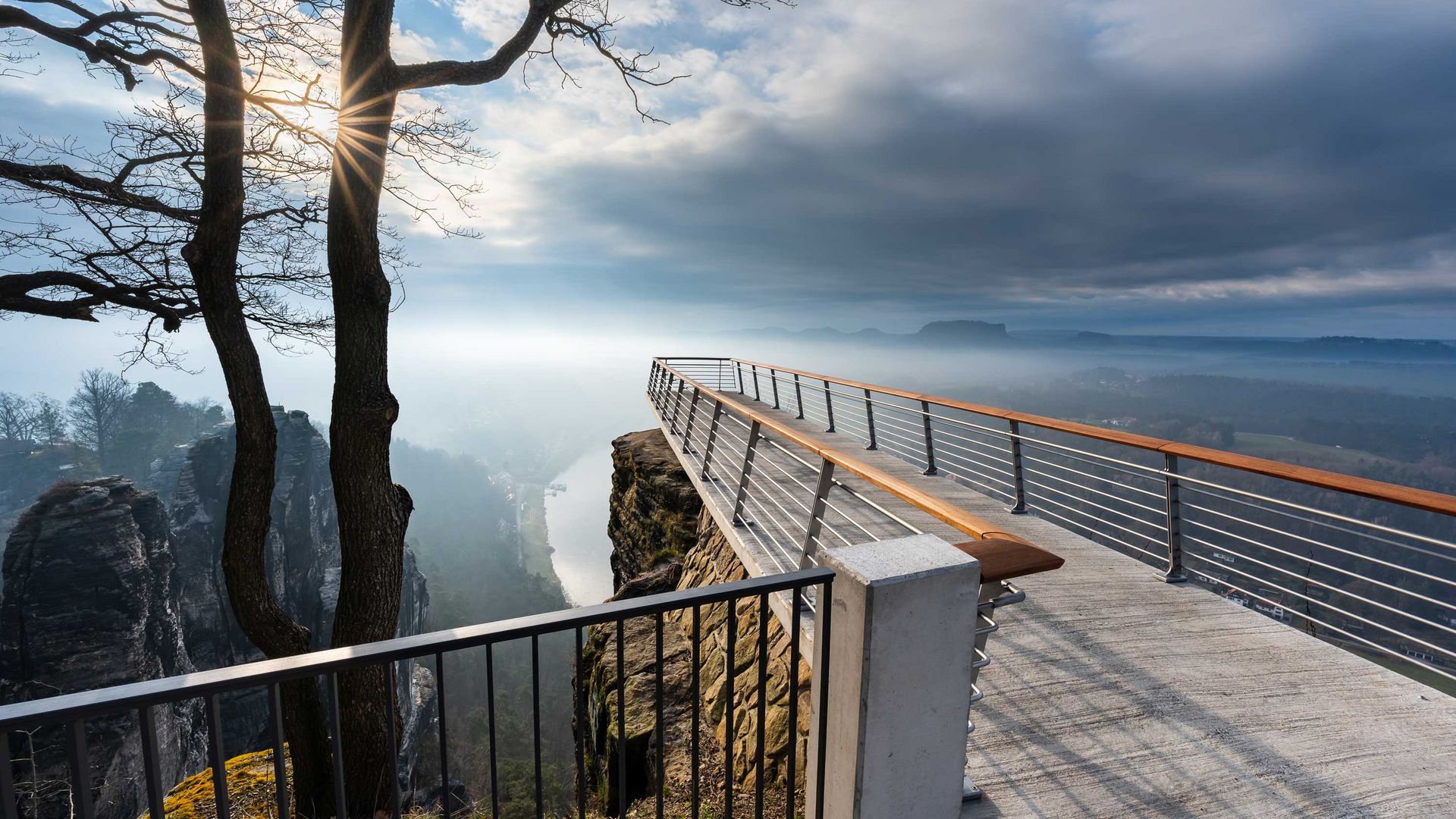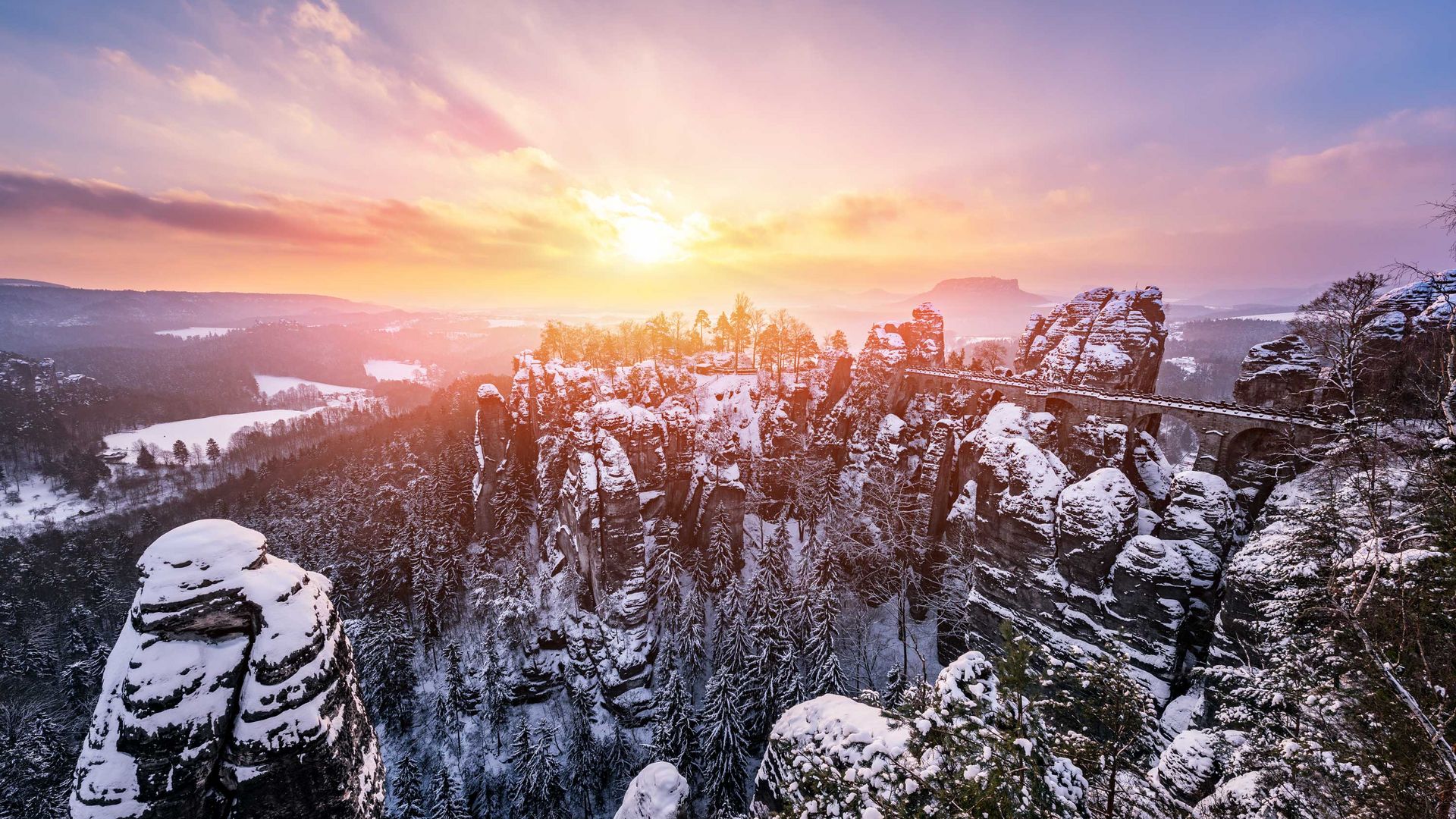The Bastei looks back on a fascinating history. Travellers discovered the beauty of this place over 200 years ago and it soon became one of the most important tourist centres in the region.
The beginnings of tourism
The tourist development of the Bastei began modestly. The Bastei was first mentioned in travel literature in 1797. It was also at this time that the first simple catering service was established: a resourceful entrepreneur sold food and drink to visitors from a carrier basket.
First permanent accommodation
1812 marked another milestone: the first ‘bark huts’ were built a little away from the main viewing point. These primitive shelters, run by the Lohmen butcher Pitsch, offered travellers simple hospitality and accommodation.
The first inn
With the growing popularity of the Bastei, the need for better infrastructure also increased. The first permanent inn was finally built in 1826. This was an important step in the development of tourism in the region.
The Bastei Bridge
A highlight in the history of the Bastei is undoubtedly the construction of the Bastei Bridge. The first version was built from wood in 1824. Only a few years later, in 1851, it was replaced by the stone bridge, which is still admired today as a technical monument. With a length of 76.5 metres, it connects the rocks and offers spectacular views.
Expansion of the infrastructure
Over the course of the 19th century, the infrastructure on the bastion was continuously expanded. More buildings were constructed, including an observation tower and additional accommodation for the growing number of visitors.
Artistic inspiration
The impressive landscape of the Bastei not only attracted tourists, but also inspired numerous artists. Caspar David Friedrich's painting of the Neurathen rock gate is particularly famous and captures the romantic fascination for this landscape.
The history of the Bastei is a testimony to how an originally unspoilt place developed into a popular tourist destination without losing its natural charm. From humble beginnings to a well-developed tourist infrastructure, the Bastei has evolved over two centuries to become a landmark of Saxon Switzerland.
